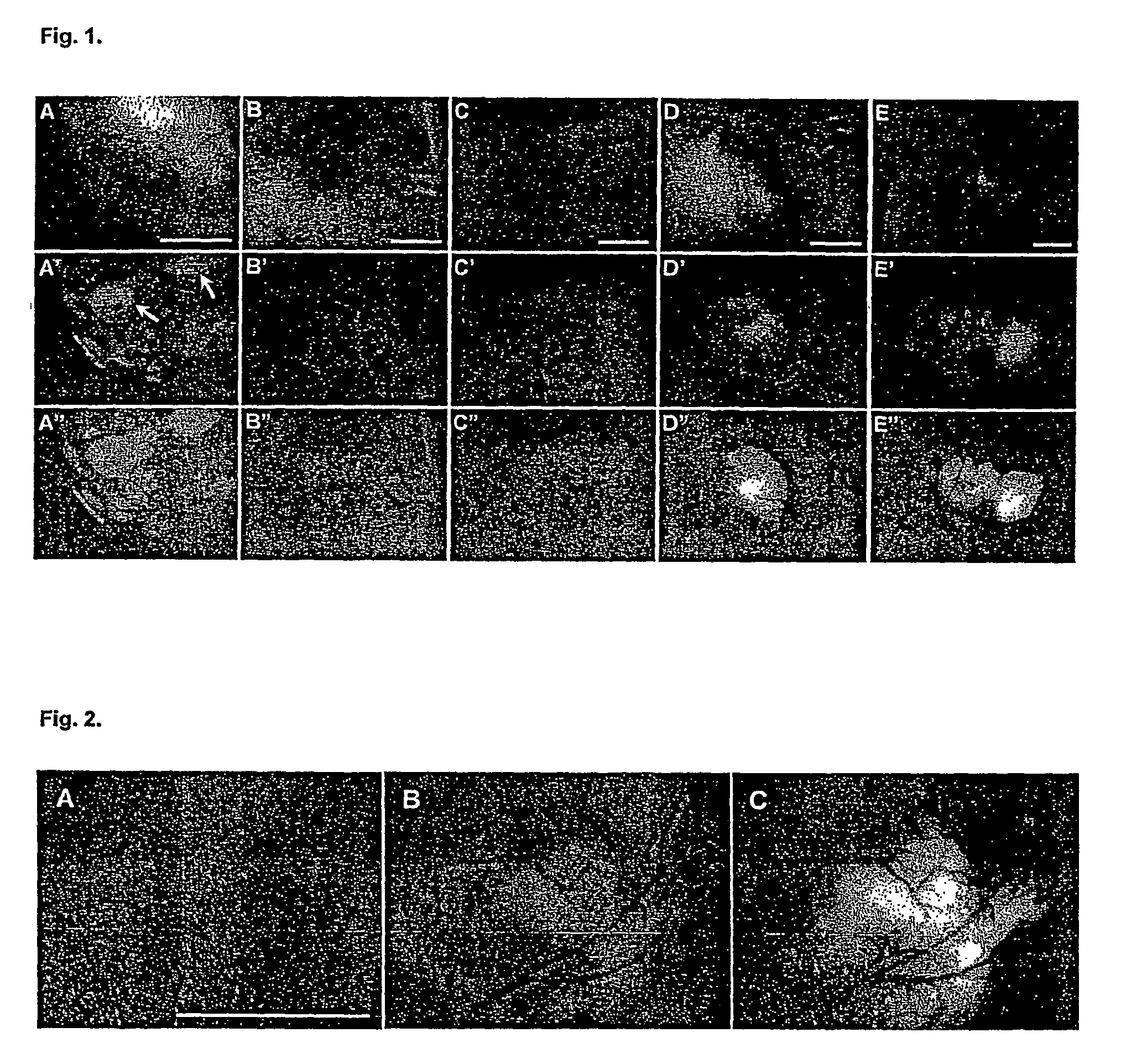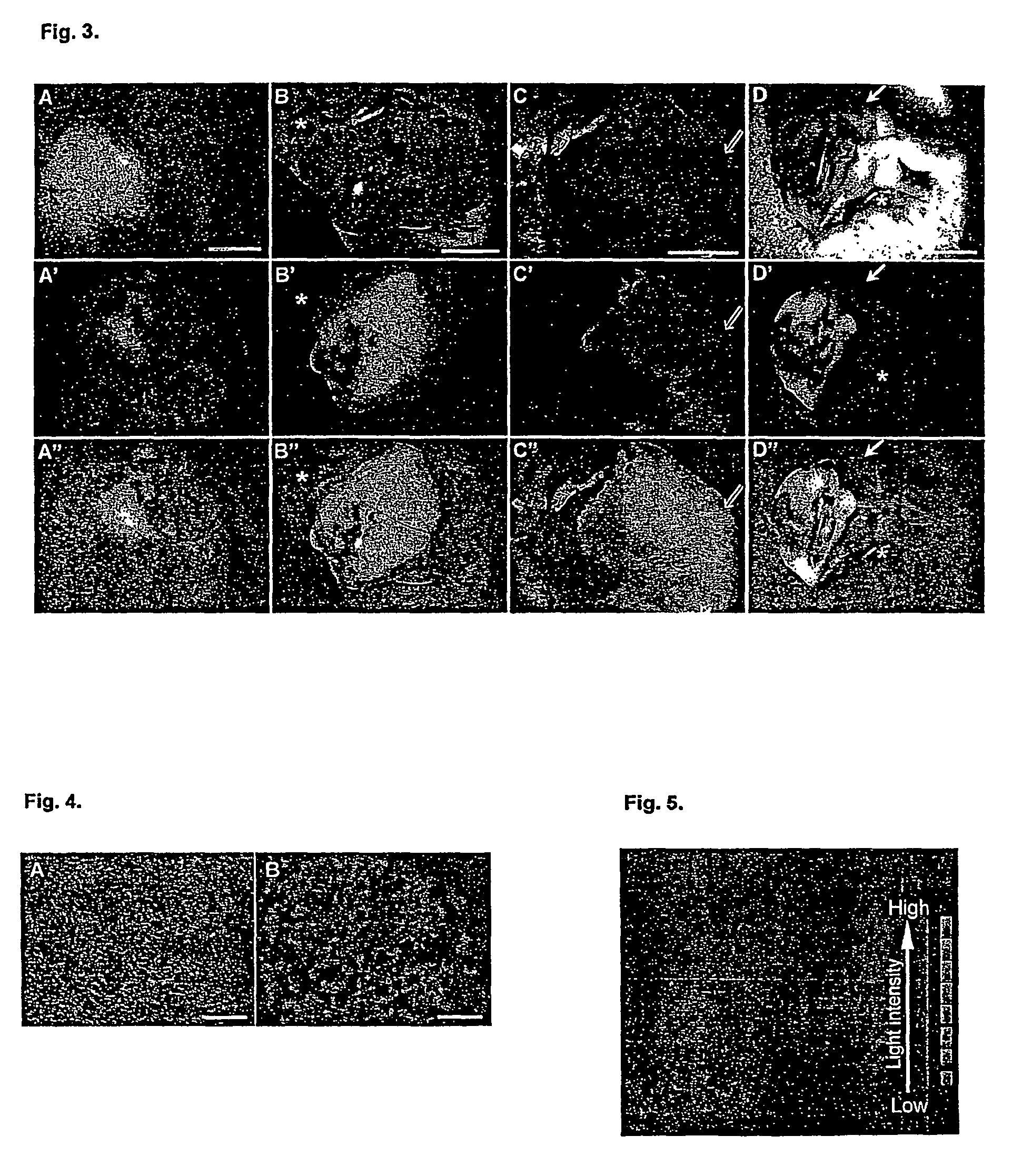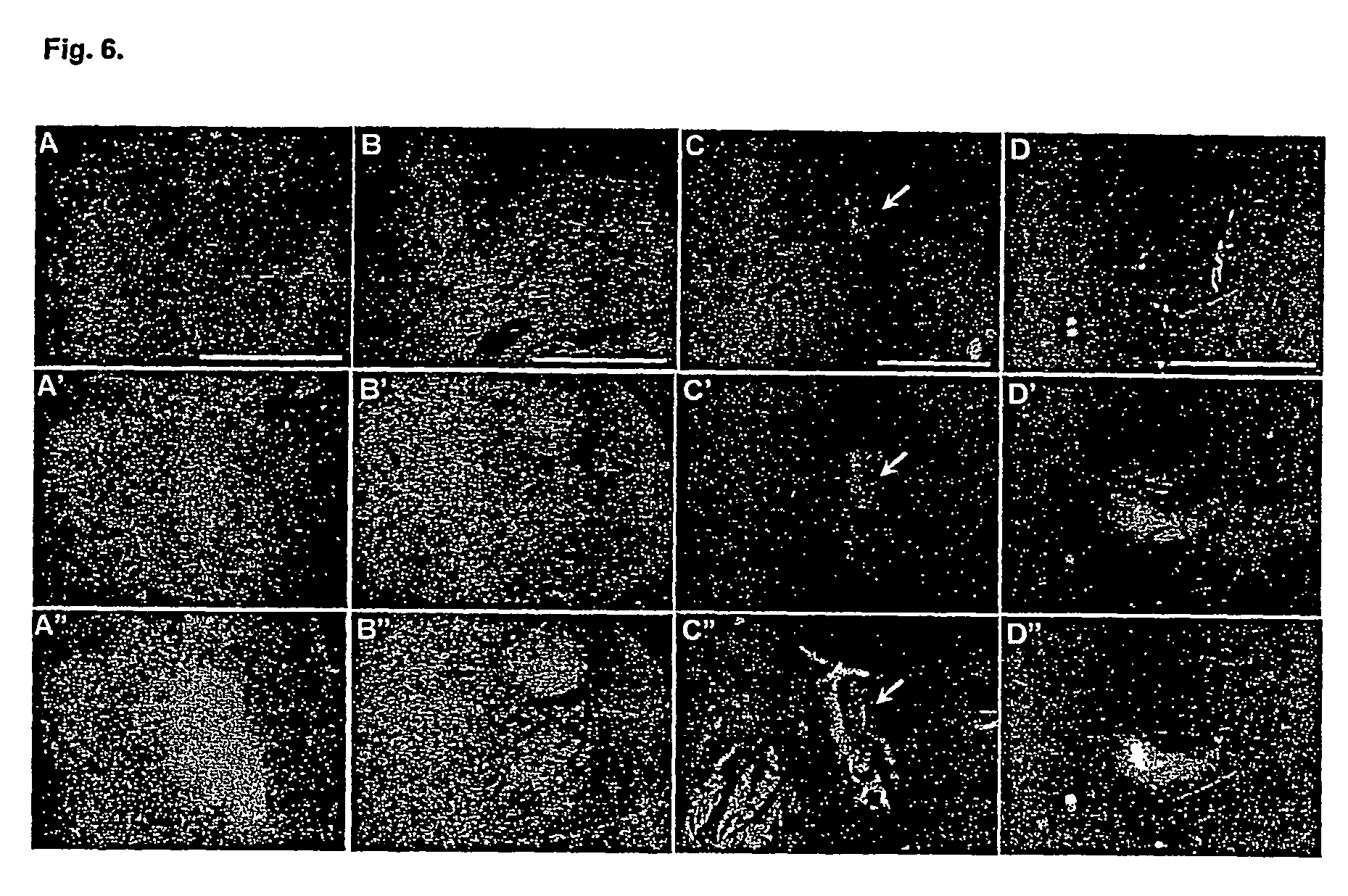Vaccinia virus for diagnosis and therapy of tumors
a technology of vaccinia virus and tumors, applied in the field of diagnostic and pharmaceutical compositions, can solve the problems of inability to show whether, lack of sensitivity and specificity of conventional tumor diagnostic methods, etc., and achieve the effect of easy identification of such bacteria
- Summary
- Abstract
- Description
- Claims
- Application Information
AI Technical Summary
Benefits of technology
Problems solved by technology
Method used
Image
Examples
example 1
Materials and Methods
[0098](A) Bacterium Strains.
[0099]The bacterial strains used were attenuated Salmonella typhimurium (SL7207 hisG46, DEL407[aroA544::Tn10]), attenuated Vibrio cholerae (Bengal 2 Serotyp 0139, M001 DattRS1), and attenuated Listeria monocytogenes (D2 mpl, actA, plcB) The bacterial strains were kindly provided by Prof. W. Göbel (University of Würzburg, Germany).
[0100](B) Plasmid Constructs.
[0101]The plasmid pLITE201 containing the luxCDABE cassette was obtained from Dr. Marines, Biotech 24, 1998, 56-58). The plasmid pXylA-dual with the operon sequence of gfp-cDNA, lux AB, lux CD, and lux E under the control of the Xylose promoter was kindly provided by Dr. Phil Hill (University of Nottingham, UK).
[0102](C) Transformation of Bacteria
[0103]The bacteria were transformed by electroporation.
[0104](D) Tumor Cell lines. The rat C6 nitrosourea-induced glioma cell line (ATCC, Rockville, Md.) was cultured in RPMI-1640 medium (Cellgro®, Mediatech, Inc., Herndon, Va.) supplemen...
example 2
Results Obtained by Intravenous Injection of Recombinant Vaccinia Virus rVV-ruc-gfp into Mice
(A) Monitoring of Virus-Mediated Marker Gene Expression in Immunodeficient Mice
[0120]Vaccinia virus (1×108 pfu) carrying the Renilla luciferase—GFP fusion expression cassette (rVV-ruc-gfp) was introduced intravenously into nude mice with no tumors. The animals were observed once every 3 days over a two-week time period under the low-light imager to monitor luciferase catalyzed light emission immediately after intravenous injection of coelenterazine, and under a fluorescence microscope to visualize GFP expression. Neither apparent luminescence nor green fluorescence was detected in the animals when imaged externally, except at certain locations that had small skin lesions. Such luminescence and fluorescence signals disappeared after a few days once the lesions had healed. Animals were sacrificed one week and two weeks after viral infection, and their organs were removed and examined for the p...
example 3
Results of Intravenous Injection of Bacterial and Mammalian Light-Emitting Cells into Mice
(A) Visualization of Light Emitting Bacteria present in Whole Animals after Intravenous Injection
[0133]To determine the fate of intravenously injected luminescent bacteria in the animals, 107 bacteria carrying the pLITE201 plasmid in 50 μl were injected into the left femoral vein of mice under anesthesia. Following closure of the incision with sutures, the mice were monitored under the low light imager (ARGUS 100 Camera System, Hamamatsu, Hamamatsu, Japan) in real time and photons were collected for one minute. The imaging was repeated in two-day time intervals to determine the presence of light emission from a given animal. It was found that the distribution pattern of light emission following an intravenous injection of bacteria into mice was characteristic of the bacterial strains used. Injection of the attenuated V. cholera into the bloodstream resulted in light emission localized in the li...
PUM
| Property | Measurement | Unit |
|---|---|---|
| Temperature | aaaaa | aaaaa |
| Temperature | aaaaa | aaaaa |
| Temperature | aaaaa | aaaaa |
Abstract
Description
Claims
Application Information
 Login to View More
Login to View More - R&D
- Intellectual Property
- Life Sciences
- Materials
- Tech Scout
- Unparalleled Data Quality
- Higher Quality Content
- 60% Fewer Hallucinations
Browse by: Latest US Patents, China's latest patents, Technical Efficacy Thesaurus, Application Domain, Technology Topic, Popular Technical Reports.
© 2025 PatSnap. All rights reserved.Legal|Privacy policy|Modern Slavery Act Transparency Statement|Sitemap|About US| Contact US: help@patsnap.com



